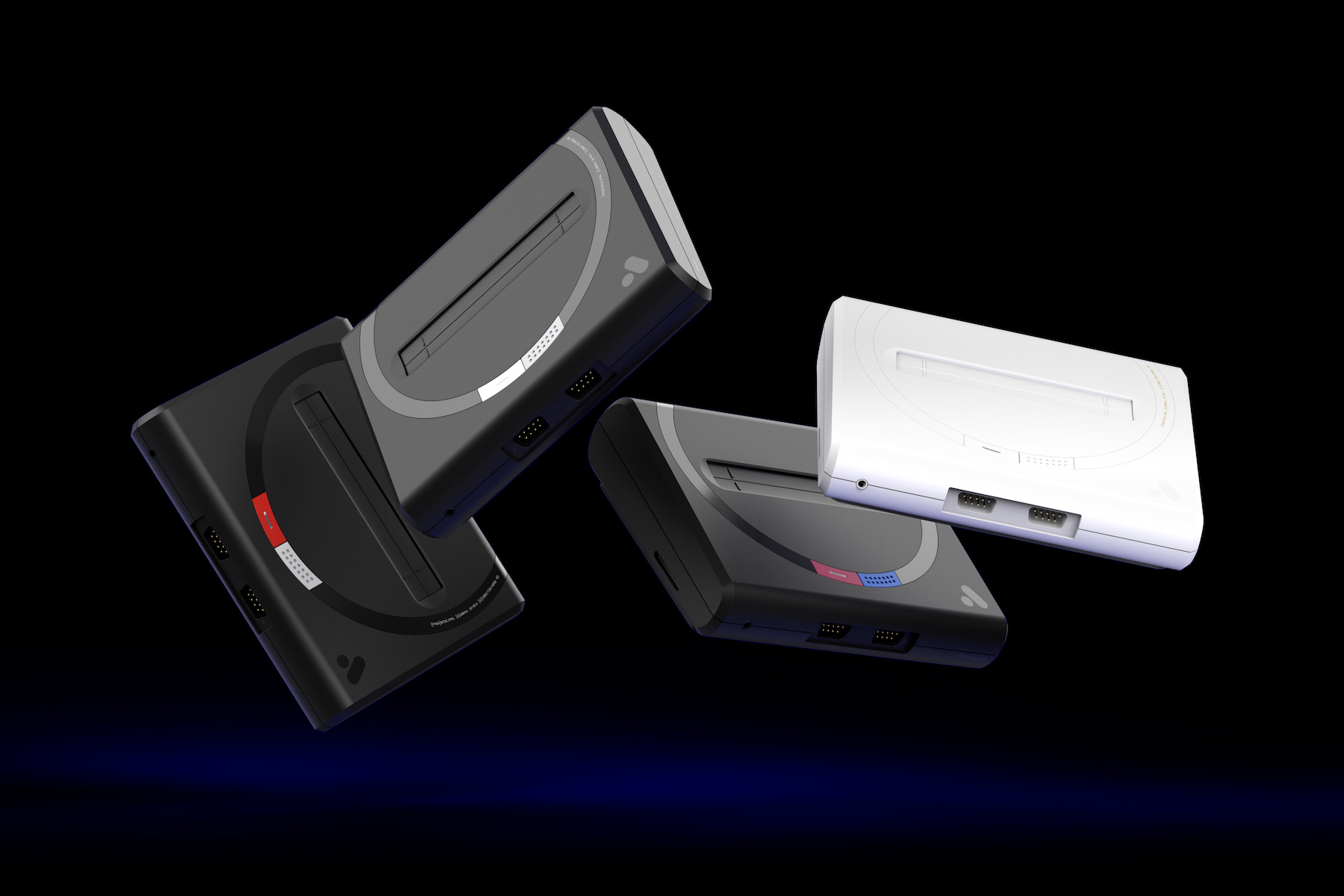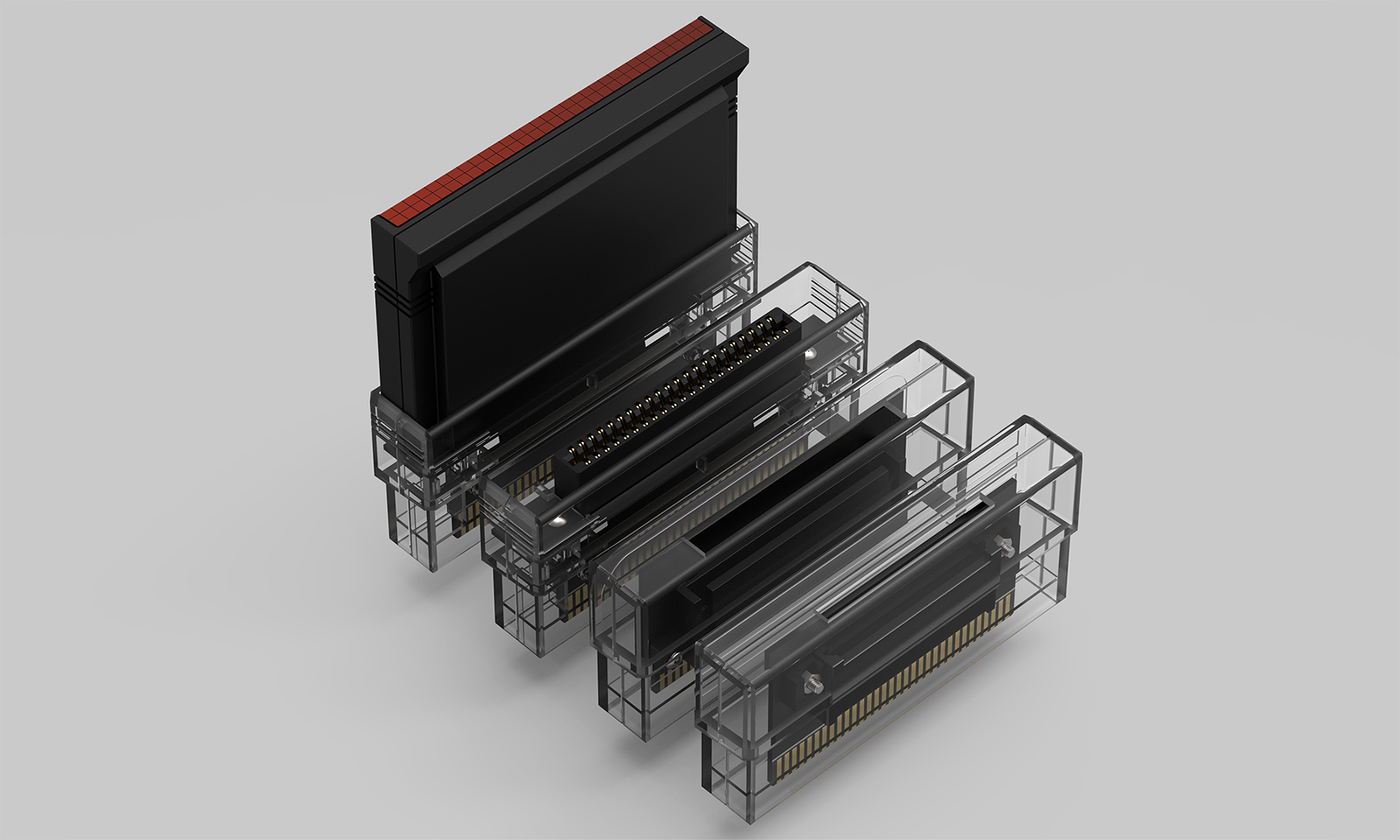There has never been a better time to be a retro video game enthusiast. Playing old video games on modern screens previously required elaborate wiring and detailed electronics knowledge, or you had to venture into questionable ROM sites and tinker with confusing emulators. Today, however, we are fortunate to have an array of options, led by Nintendo’s “classic” mini-consoles. But the high-end, high-end retro console maker remains the hipster Anglo-American company, Analogue.
Analogue’s Super NT, a Super Nintendo (SNES) hardware emulator released last year, was a revitalization of the SNES library ready to plug (and high-end) on modern HDTVs with unmatched graphics fidelity even by own offerings. from Nintendo. But the Super NT was just the tip of the retro spear, because, as any ’90s kid will tell you, some console wars never die. And of course, Analogue just posted their take on the other dominant console of the 16-bit era: the Sega Genesis. Analog’s Mega SG is a nice little piece of hardware that does for the Genesis / Sega CD / Master System library what the Super NT did for the Super Nintendo – and is the better value proposition of the two.
Advantages
- An almost perfect emulation
- Play Genesis and Master System games from all regions
- Supports Sega CDs
- Carts are easy to find and inexpensive
The inconvenients
- No way out to a CRT monitor
- No 32X support
The Mega SG is a sleek little console about the size of a stack of CDs, almost exactly the same size as the Super NT. The build quality is just as premium: it consists of a matte finished plastic frame and rubber footrest, with a subtle design that takes inspiration from the original Sega hardware, visible in the pallet. power and reset button colors. But like the Super NT, this is really the guts of the Mega SG.
The device uses FPGA technology (that is, field programmable gate arrays, in case you were wondering) to replicate the original console at the hardware level. This means that unlike a software emulator, you are not running software that claims to be the original console and needs to be modified to work game by game. With the FPGA, Analogue recreated the Genesis experience from the hardware level. For all intents and purposes, this is as good as the original material itself. It played each of the two-plus dozen carts that I ran as perfectly as it could, with absolutely none of the lags emulators are famous for.
And that’s where the real selling point of the Mega SG is: it does it all on a modern flat screen TV (even 4K TVs) right out of the box, with no issues.
Anyone who’s spent time tinkering with retro games knows that you can quickly get lost in a cable and compatibility wormhole. Check out all the options and features of the best Genesis emulator available for a PC (People maybe, or Kegan Fusion) – a lot of these settings aren’t just for fun, optional tweaks – you need to program them for each game you want. try to play.
On the other end of the spectrum, if you want to hook up an original console to a modern TV, you’ll need an expensive upscaler and custom cables, which will easily outshine the already steep price tag of the Mega SG (190 $). The other option is sort of a Raspberry Pi setup, but again this will require some adjustment of the emulator game by game. The Mega SG takes all that complexity out of the box – you just need to plug it in. your HDMI port and it’s ready to play on your flat screen, automatically scaled and configured to mimic the 4: 3 aspect ratio of old-school CRT TVs.
Now, that doesn’t mean that Analogue doesn’t give you options to tinker with. Indeed, it is a handyman’s dream. As with Super NT, you can customize the video output and smooth out the pixels. There are a number of ways you can activate scanlines. Analogue advises “to use hybrid scanlines at the default depth with vertical interpolation enabled and to ensure that the vertical resolution is at full scale (4x or 5x, not 4.5x which is the value by fault).” If this is the kind of phrase that gets you excited, then yes, this is the console for you.
The audio quality displayed here is particularly interesting. The Sega Genesis has been ridiculed for sounding crappy due to some models using low quality mass market components. But here, the audio quality of the analog surpasses even what the Genesis was capable of best, producing audio across the entire frequency range (you can also limit the frequency range to match the hardware. original). There’s even a 3.5mm audio jack on the front of the console, like the Genesis, if you want to plug in some high-end headphones and dive into the full chiptune nirvana.
The Mega SG has ports for older Genesis controllers that will also support anything that fits this hole, including all bluetooth enabled Genesis controllers on the market. But note that the console does not come with a controller, so allow at least $ 10-25 more for controller expenses. As they did for the Super NT, Analogue has teamed up with controller maker 8BitDo again, this time to market their Genesis wireless controller, the m30 2.4g – it’s $ 25 and I highly recommend it.
If you’ve made it this far in the review, you’re probably wondering if the Mega SG supports the line of Sega peripherals and hardware add-ons that spawned the “power tower†meme. The answer is yes and no.
Yes, the Mega SG works great with all Sega CD models, so you’re into the 90s full-motion video capture cheese you’re golden here (although it does look a bit physically inelegant when connected. ). But no, the Mega SG does not work with the Sega 32X. And yes, there is a cartridge adapter for Master System games included, and yes, there are more adapters promised to come soon, including a Game Gear adapter. And yes, absolutely sure you can snap Sonic 3 in Sonic and Knuckles – “lock on” technology created and preserved.
The Mega SG costs $ 189.99 without a controller. It’s definitely a steep price to indulge in a retro gaming hobby, but I think there’s more of a value proposition here than with the similarly priced Super NT console.
Unlike Super Nintendo games, Sega Genesis carts are very inexpensive right now. I spent $ 60 at a neighborhood retro store and walked away with 10 carts, including classics like Sonic 2 and 3, Ecco the dolphin, Modified beast, Shinobi 3, and Streets of rage. Baskets are plentiful by lot on eBay, OfferUp and local Goodwills. Sure, there are rare collectibles that go up to steep prices, but even some of the best games to ever graced the Genesis are cheap – Gunstar hero is $ 50 on eBay and ToeJam & Earl can be acquired for $ 20. Additionally, the Super NT was “jailbroken†shortly after its release, allowing you to boot ROMs from an SD card. We can probably expect the same treatment for the Mega SG, which means Sega’s deep library will soon become very accessible. As a result, $ 189.99 is not as expensive as it seems at first glance.
Unlike Super Nintendo games, Sega Genesis carts are very inexpensive right now.
The Mega SG comes with one final surprise – a built-in, all-new Genesis game from developer Battlefield DICE. Once believed to be lost forever, “Hardcore” (or “Ultracore” as it is called here for licensing issues) is a European-style run-and-gun shooter that a small team of Dedicated developers recovered from a single dead hard drive and saved it from obscurity. The game, a sci-fi-themed shooting festival, exudes’ 90s aesthetic, even though it feels a bit half-baked. The developers claim the game is 99% complete, but it looks a bit anemic on the concept stage. There’s almost no frame or context as to why you’re killing tons of bots, but shooting is decent choppy action. Either way, it’s a fascinating piece of retro history that’s built into the Mega SG. It’s not great Director’s Cup Turrican, which was installed on the Super NT – but it’s a good thing to have.
Ultimately, the question remains: who is the Mega SG for? Yes, this is for nostalgic Sega enthusiasts, and yes, it is for retro gaming historians, although some of them would definitely prefer to use original hardware on old CRT TVs (like the Super NT, the Mega SG does not come out on old TVs – only for HDMI compatible sets).
But I would say that, even more than the Super NT, the Mega SG is more accessible to those who have been intrigued by retro games but don’t know where to start. The Mega SG may well be the ultimate “retro” gaming console on the market right now for a key reason: Sega games are cheap, plentiful, and easy to acquire. With Super NT, you are tied to the Super Nintendo cart market, which is kind of in a price bubble. But the Sega library is deep, plentiful, and affordable. In the current state of console warfare, perhaps because of its failures, Sega is once again doing what Nintendo isn’t.
All products recommended by Engadget are selected by our editorial team, independent of our parent company. Some of our stories include affiliate links. If you buy something through any of these links, we may earn an affiliate commission.


